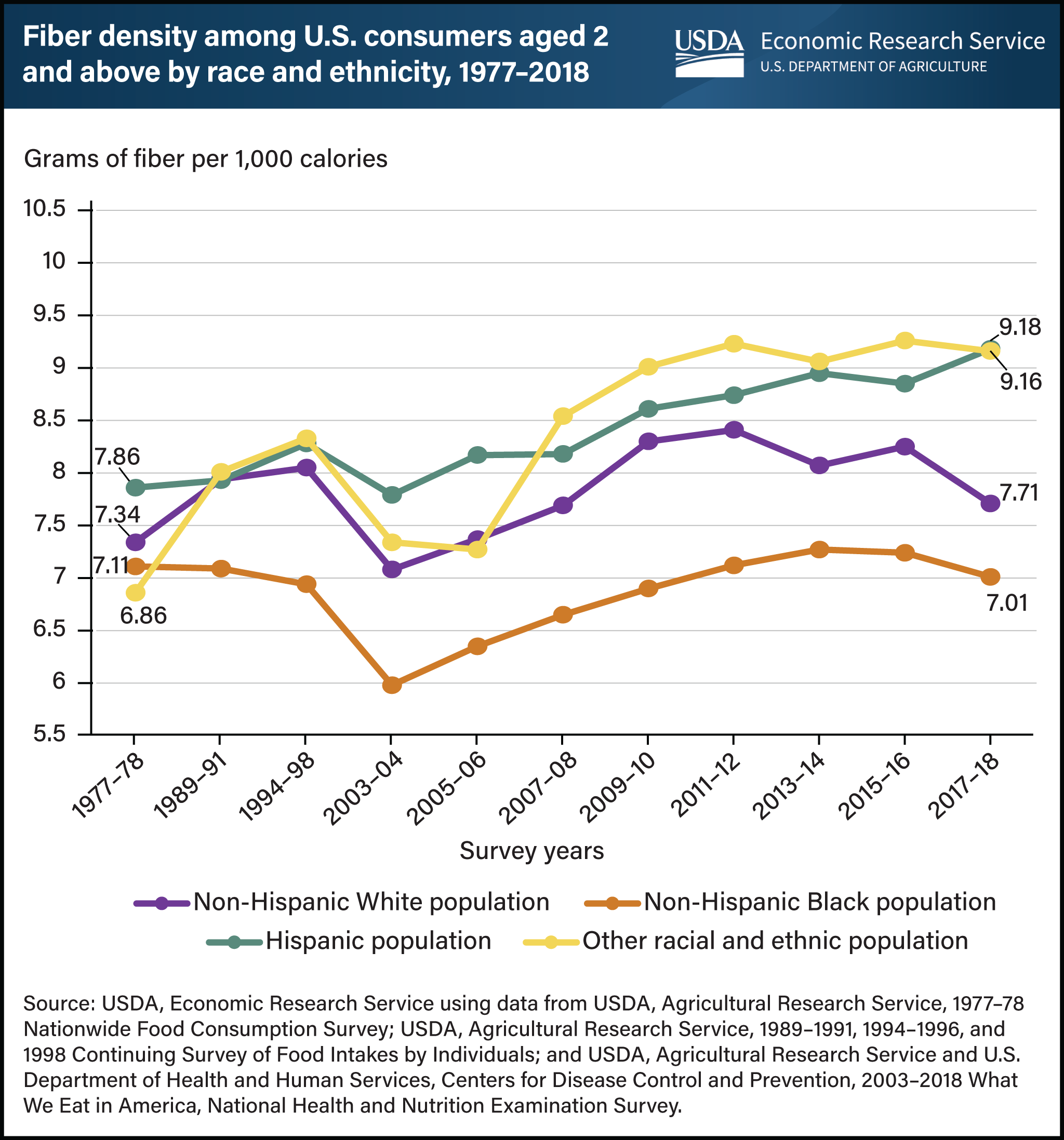Over time, racial and ethnic gaps in dietary fiber consumption per 1,000 calories have widened
- by Biing-Hwan Lin and Joanne Guthrie
- 3/28/2023

According to the 2020-2025 Dietary Guidelines for Americans, low intakes of dietary fiber are a public health concern for the general U.S. population. Improving consumption of dietary fiber may reduce risk of cardiovascular disease, type 2 diabetes, and some types of cancer. The diet of U.S. consumers averaged 8.1 grams of fiber for each 1,000 calories in 2017–18, or 58 percent of the recommended 14 grams per 1,000 calories. Researchers from USDA, Economic Research Service (ERS) and an external collaborator analyzed Federal food consumption survey data spanning the years 1977 through 2018 (the most recent available national data). They found that dietary fiber density, measured as grams of fiber per 1,000 calories in food consumed, did not vary much across race and ethnicity in the 1977–1978 and 1989–1991 survey periods, but the gap in fiber density across race and ethnicity has widened over time. Since 1994–98, the diets of non-Hispanic Black people have been significantly lower in fiber density than those of non-Black people. In 2017–18, Hispanic populations and individuals of other races and ethnicities had a diet of 9.2 grams of fiber per 1,000 calories—significantly higher than the 7.7 and 7 grams consumed by non-Hispanic White people and Black people, respectively. This chart appears in ERS’ report Dietary Quality by Food Source and Demographics in the United States, 1977–2018, published March 2023.


